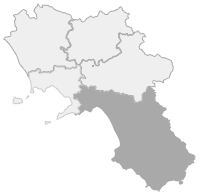It was the sea, pitiful, that accompanied his white, now lifeless limbs, placing them on a strip of land in front of Cape Enipeo, the extreme southern offshoot of the Gulf of Poseidonia.
Thus the siren Leucosia, after her fatal encounter with Ulysses, inextricably linked her name to the island and the green promontory of Licosa, the silent kingdom of the scented shrubs of the scrub.
There where, according to Aristotle, a temple dedicated to Leucothea, the goddess who flows on the white foam of the sea, would have arisen. Homer was the first to sing about them, those places of myth, favored by wealthy Romans who built refined seaside villas there. Of one, equipped with a large tank for breeding moray eels, the sea has kept important remains over time. Among the main attractions, today, of the Marine Protected Area of Santa Maria di Castellabate, an authentic wonder of blue Cilento
Entirely included, with its 7,095 hectares, in the Cilento Vallo di Diano and Alburni Park, from which it is managed, and in the territory of the municipality of Castellabate, the Marine Protected Area extends into an arm of the sea between Punta di Ogliastro and the Baia del Saùco and, on land, it encompasses two hectares of pristine coast, populated by olive and fig trees.
Zone A is subject to the greatest constraints as an integral reserve, which covers the stretch of sea between Punta Tresino, recognized as a Site of Community Interest (Sic) for its environmental value, where an Angevin tower stands, and Punta Pagliarola, whose protection it provided an Aragonese tower. Outside zone A and in the stretch between Punta Torricella and Punta dell'Ogliastro is zone B of the general reserve, covering 4,000 hectares, the largest portion of the AMP, which is accompanied by zone B1 near Licosa. The island, where the old lighthouse is, is a Site of Community Interest due to its precious biological diversity. There is also an endemism: the Podarcis sicula Klemmeri, a lizard with a green-blue livery.
The remaining part of the sea of the Amp, of about 3700 hectares, falls within zone C of partial reserve.
The sea in the protected area is characterized by the presence of some of the most interesting and significant habitats in the Mediterranean, with a great variety of both plant and animal species. And the unique peculiarity of the presence of Cilento Flysch, which characterizes the coastal stretches and the seabed up to five miles. It can be found off the coast of Licosa and Ogliastro Marina. The sedimentary rocks, with alternating layers of sandstone and clay of different colors, with partially or completely submerged caves and cavities, represent a favorable substrate for the establishment, on land, of the species typical of the Mediterranean maquis and, at sea, of the Posidonia.
Vast grasslands of the typical Mediterranean seagrass extend in the area of the promontory and the island of Licosa, in front of the beaches of Pozzillo, Ogliastro and Lago.
Among the long and thick foliage, many species of marine animals find refuge and raise the new generations: including groupers, breams, moray eels and lobsters and the tropical parrot fish, but also madrepores, gorgonians, sponges and bryozoans. And the Siriella Castellabatensis, a crustacean discovered by the Anton Dohrn Zoological Station, which has contributed a lot with its studies to the birth of the Amp. Also in that area, Baia Arena of Ogliastro Marina has often been the scene in recent years of the rare laying of eggs of the Caretta caretta tortoise. Another typicality of the stretch of sea between Ogliastro Marina and Punta Licosa is the rock mullet known as Rossa di Licosa, which grows only there.
Over 20 meters deep, you come across seabeds formed by coralligenous, the work above all of red and green algae, where sponges, madrepores, gorgonians, bryozoans, bivalves, and annelids and numerous fish live.
Seabeds so varied and rich in life are ideal for diving even at low depths. To the north, in front of Capo Pagliarolo, there are two very popular and popular areas, where the rocks and underwater cavities are home to numerous species. To the south, the Secca della Bella, at a shallow depth, is suitable for snorkelling, while further out and deeper, the Caduta della Bella offers seabeds of rare beauty.
In addition to the natural wonders, the Marine Area of Castellabate also holds important archaeological remains, today submerged due to the rising sea level. For this reason, the seaside villa with the Roman-era pool for moray eels is now located about a kilometer from the coast, in front of the beach of the lake. Right there, in 2010, under the sand of the beach, a stone quarry was found from the 6th century BC from which the Greeks Trezeni, settled on the Cilento coast, extracted the cylindrical blocks of sandstone, used as drums of the columns of the Doric temples of nearby Poseidonia, the Paestum of the Romans.
Another important archaeological discovery has made it possible to identify the submerged remains of Erculea with the Roman pier in front of San Marco, where the modern port of Castellabate is located. The city swallowed by the sea was a port of call very frequented by ships heading north and was the support point for the supplies of the triremes of the imperial fleet bound for the military port of Misenum.




Comments powered by CComment